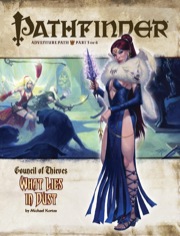Next weekend we are going to try our first player versus player scenario. We are going to organize into teams with whoever shows up and go at it. You have to make a character using the Pathfinder Core Rulebook and you have 20,000 gp to spend. Rick, the GM running it added the further condition that one shot items costs 5x as much since most one shot items have far more importance when the entire scenario is guaranteed to play out in a single battle.
Player versus player (PvP) is a setting I’m inherently comfortable with. I was never one to generate a multipage history for a new character, but rather one to show up as one of several already explored tropes. PvP is where we leave the RPG behind and go back to the game’s miniature war game roots. These characters don’t really need a story, in fact, they don’t even need to make sense, like a Wizard with no Spellcraft. It’s just a miniatures war game at this point, and there probably won’t be a lot of uses of Spellcraft in the coming battle.
Take Sparky, the Sorcerer I just put together. He’s a Sorcerer, but Charisma is not his highest stat. That’s because he’s going to attempt to break precisely two spells in this battle: Shocking Grasp and Scorching Ray. Since neither spell allows a saving throw, having a high Charisma doesn’t really benefit me. So I gave him a 14 Charisma so that he would get his two bonus spells and left it at that. No, what this character needs is the ability to make his to-hit roll to inflict a lot of damage on an opponent, which means he needs lot of Dex. We are using Epic Level point buy in the Core Rulebook, so I gave Sparky the following stats: S7, Co15, D18, I14, W8, Ch12. Since we start at level 5, I can use my one point increase to move Con up to 16. Now if I make him a halfling, his stats become: S5, Co16, D20, I14, W8, Ch14. Perfect! Note: I gave him a high Int, because it gives a AC bonus to my Spectral Hand spells.
Since I’m really trying to break Shocking Grasp, I’m going to make him a Draconic Bloodline Sorcerer and chose a bonus with electric spells. This will mean that my Shocking Grasp does 5d6 +5 points of damage, for an average of 23 points. Now I’m going to spend the 20,000gp on two Metamagic Rods of Empower, which allows me to cast six spells and shell out damage at a 50% bonus. So now I’m looking at 5d6x1.5 + 5 = 5x(3.5×1.5) + 5 = 28.25 points of damage per casting. Combine that with Spectral Hand, and I can hit a target at a range of 150 feet with one Empowered Shocking Grasp every round. The theoretical maximum of a PvP character would be a Barbarian with an 20 Con (24 when ragging) for 76 points. Assuming said Barbarian charged me starting at 150 feet and moving 80 a round, he would be dead on the third application of Shocking Grasp. When means he would get precisely one swing at me before he went down. Most characters aren’t going to have nearly that many HPs, and so two rounds of Shocking Grasp should clean their clock.
To help me in the hitting department, I took the feats of Weapon Finesse, so that his Dex applied to his natural attack rolls instead of his strength, as well as Weapon Focus (Natural). So, when it’s all said and done, if the character is wearing metal armor, I get a +3 bonus for the Shocking Grasp spell, a +2 bonus for Spectral Hand, a +5 Dex bonus, a +1 Weapon Focus bonus, and a Base Attack Bonus of +2, and my +1 size bonus for being small, which equals +14 to hit, and that’s on a touch attack! MUHAHAHAHAHA.

